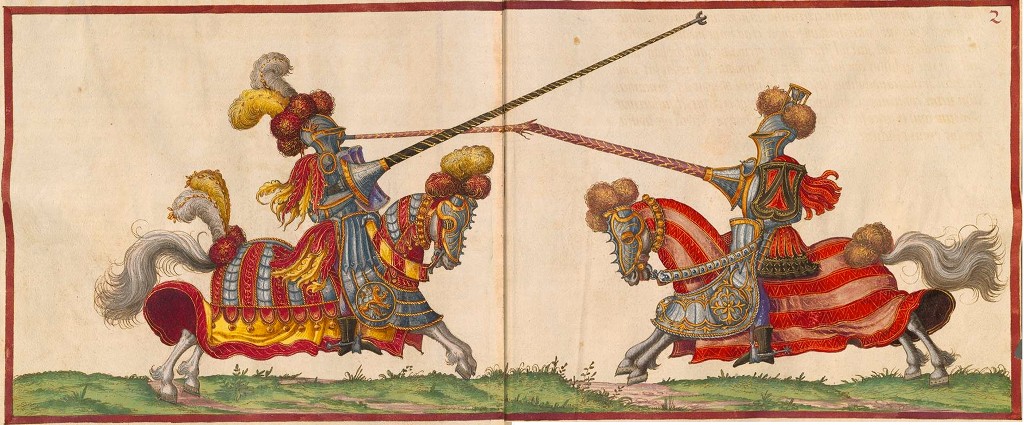It’s not just the favorite weapon to the central event of renaissance fairs all across America. The lance was the premier weapon for medieval heavy cavalry in Europe, allowing massed formations of mounted warriors to plow through lines of infantry. It was also effective against other mounted lancers.
Though it was no longer the favored weapon of mounted cavalry after the introduction of firearms, that effectiveness is the reason why the lance was in common use from the 11th century, all the way through World War I.
Part of the reason is just how deadly and penetrating a lance can be. The sheer force of a three-meter long stabbing weapon coming at an enemy from an armored knight on a warhorse at full gallop is terrifying. It should be terrifying, because it’s also incredibly deadly, even if the enemy is wearing armor of his own.

A round fired from a NATO rifle firing standard 5.56 mm ammunition has the muzzle energy of just a little more than 1.7 kilojoules. Medieval armor would not stop bullets directly, unless the shape of the armor would deflect its trajectory.
Even the firearms of the time period essentially put an end to armored knights’ dominance on the battlefield, but before the introduction of guns, a massed force of knights on horseback charging into infantry was the projectile weapon of choice.
Historical researchers at The Wallace Collection in London did some digging into the effectiveness of the lance as a weapon in combat. Alan Williams, one of the experts, calculated that standard wrought iron plate armor of the Middle Ages, some 1.9mm thick, would require 100 joules of energy to penetrate. Then, he started testing.
Williams used various saddles, mounted positions, and an armored and unarmored rider to test how much energy a penetrating medieval lance could be, and the results were staggering. A mounted knight using a lance could produce up to six times the energy required to penetrate even the best breastplate iron armor.

To defend against a lance would require at least 4 millimeter-thick iron armor and eventually knights and other combatants would wear the required armor. For those who didn’t, the lance and its specially-outfitted tip would drive a hole right through their body. Those who did received adequate protection from a blow to the armor but eventually charging knights, especially those chagrin at other knights, switched targets.
Eventually, the knights began to aim their lance tips at the enemy’s head and neck. At full speed, a charging knight could create enough force to drive the lance through the enemy’s neckplate or visor and still keep positive control of the weapon, potentially moving on to skewer another target.
The effectiveness of lancers weren’t just in the initial use of the weapon, killing a few enemy troops. Lancers were shock troops, designed to break down lines of infantry in the front of a formation and try to force the likely unskilled conscripted soldiers to break away and flee. The sight of an army breaking down might have a ripple effect on the rest of the formation.
Most often, lancers would get just one charge and be forced to drop the weapon and switch to something that could be used over and over in melee combat. These are weapons like swords, axes, or usually daggers. The lance was just an opening volley in medieval combat.


